Welcome to our guide on selecting sun-loving plants for your home’s curb appeal. Your home’s exterior is the first thing visitors and passersby see, and enhancing it with well-chosen plants can significantly improve its overall appearance. This section focuses specifically on sun-loving plants and their importance in your plant selection for great curb appeal.
Sun-loving plants are a great option for curb appeal, especially if your residence gets a lot of direct sunlight. These plants thrive in the sun, are easy to care for, and come in a wide variety of shapes, sizes, and colors. Incorporating sun-loving plants into your curb appeal design can add vibrancy, warmth, and visual interest.
Key Takeaways
- Sun-loving plants are a great option for curb appeal.
- These plants thrive in the sun, are easy to care for, and come in a wide variety of shapes, sizes, and colors.
- Incorporating sun-loving plants into your curb appeal design can add vibrancy, warmth, and visual interest.
Benefits of Sun-Loving Plants
So, why should you consider incorporating sun-loving plants into your curb appeal landscaping? Well, for one, these plants are excellent at adding vibrant colors and visual interest to your exterior design.
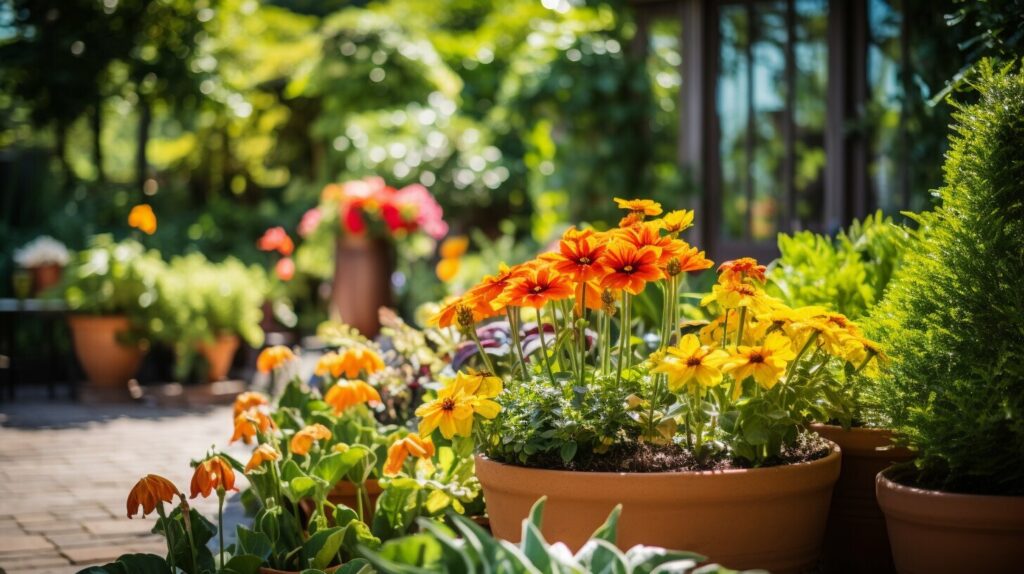
In fact, sun-loving plants can bloom in a wide range of hues, from bright and bold to soft and subtle, allowing you to create a dynamic and visually appealing landscape. What’s more, many of these plants attract pollinators like bees and butterflies, adding to the natural beauty of your home’s exterior.
But the benefits of sun-loving plants don’t stop there. By incorporating these plants into your design, you can also create a warm and welcoming atmosphere around your home. Whether you’re welcoming guests or simply enjoying the view from your front porch, a well-designed landscape with sun-loving plants can make your home feel inviting and cozy.
Factors to Consider When Selecting Sun-Loving Plants
Choosing the right sun-loving plants for your curb appeal requires some careful consideration. Here are some factors to keep in mind:
| Factor | Description |
|---|---|
| Climate Compatibility | Make sure the plants you choose are suitable for your local climate. Some sun-loving plants thrive in hot and dry conditions, while others prefer cooler temperatures. |
| Soil Requirements | Check the soil type and pH level of your planting area. Some sun-loving plants require specific soil conditions to grow well, so it’s important to choose plants that match your soil’s characteristics. |
| Maintenance Needs | Consider how much time and effort you’re willing to put into maintaining your sun-loving plants. Some plants require regular pruning, deadheading, or fertilization to stay healthy and attractive. |
| Size and Growth Habits | Determine the mature size and growth habits of the plants you’re considering. Some sun-loving plants can grow quite large and may not be suitable for small planting areas or for planting near buildings or walkways. |
Keep these factors in mind when selecting sun-loving plants for your curb appeal, and you’ll be on your way to creating a stunning and thriving landscape.
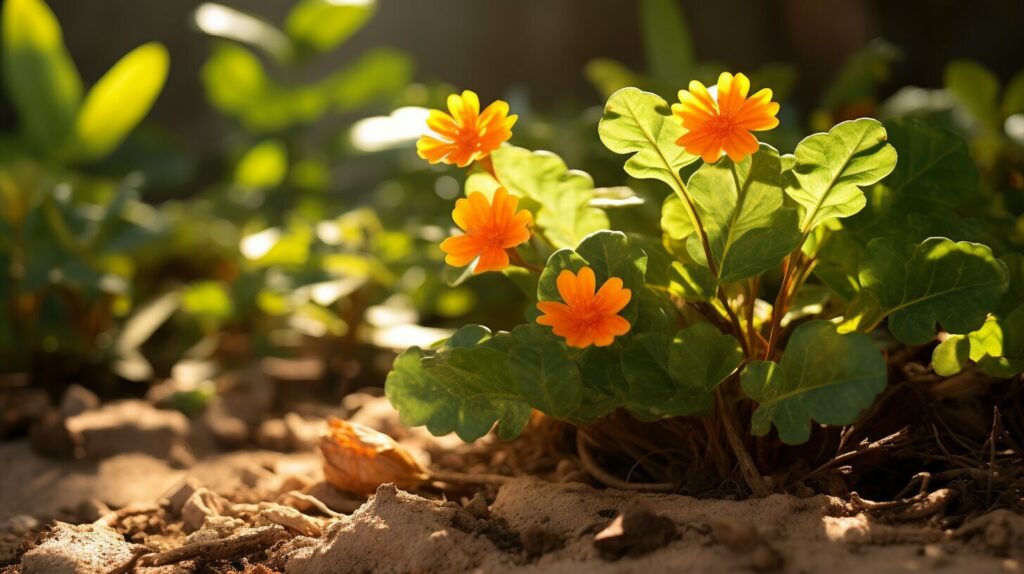
Top 5 Sun-Loving Plants for Curb Appeal
When it comes to choosing sun-loving plants for your curb appeal, the options are endless. We’ve curated a list of our top five favorites that are sure to enhance the beauty of your home’s exterior.
| Plant | Characteristics |
|---|---|
| Black-eyed Susans | A classic summer annual that produces masses of golden-yellow flowers with dark centers. They can grow up to 3 feet tall and are drought-tolerant. |
| Lantana | This versatile shrub blooms in a range of hues, from reds and pinks to yellows and oranges. It attracts butterflies and other pollinators and is low-maintenance. |
| Salvia | This perennial herb boasts long spikes of vibrant blue, purple, pink, or red flowers and can grow up to 3 feet tall. It’s drought-tolerant and attracts hummingbirds and butterflies. |
| Agastache | Also known as hummingbird mint, this perennial produces spikes of flowers in shades of pink, orange, or purple. It’s drought-tolerant and attracts hummingbirds and butterflies. |
| Zinnias | These cheerful annuals come in a range of colors and sizes, from 6-inch dwarfs to 4-feet tall giants. They’re easy to grow and attract butterflies and other pollinators. |
Plant one or all of these sun-loving beauties in your yard to create a stunning curb appeal. Don’t forget to mix and match colors and textures to create a harmonious design that complements your home’s exterior.
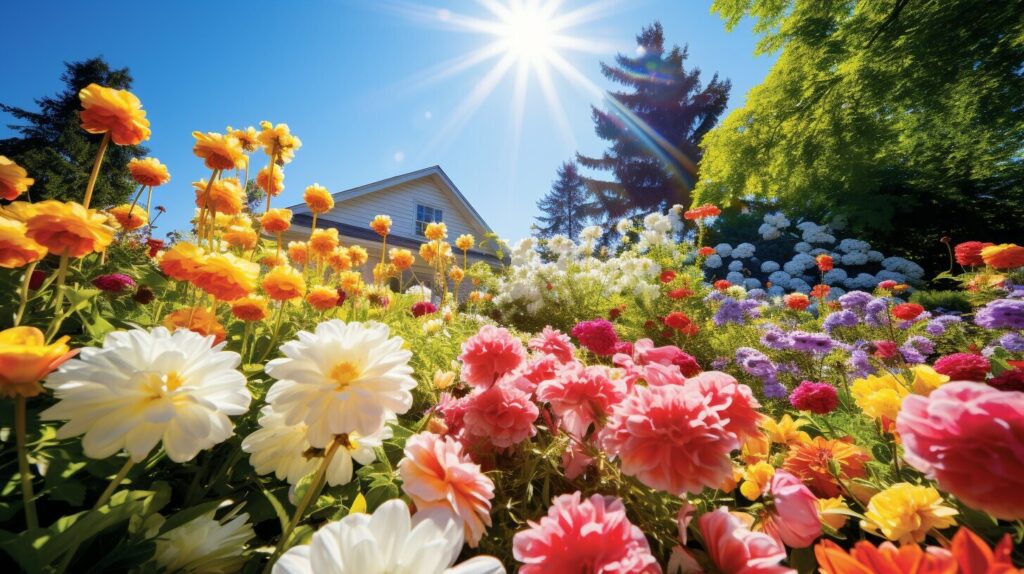
Caring for Sun-Loving Plants
Once you have selected and planted your sun-loving plants, it’s crucial to take good care of them to ensure they stay healthy and vibrant. Follow these tips to keep your plants looking their best:
- Watering: Sun-loving plants require regular watering, especially during hot and dry weather. Water deeply to encourage root growth and avoid shallow watering, which can lead to weaker plants. Be careful not to overwater and avoid getting the leaves wet to prevent fungal diseases.
- Fertilization: Use a balanced fertilizer during the growing season to provide your plants with the necessary nutrients. Follow the recommended dosage on the package and avoid overfertilizing, which can cause damage to the roots or foliage.
- Pruning: Regular pruning can help promote healthy growth and maintain the desired shape and size of your plants. Remove any dead, damaged, or diseased branches, and trim back overgrown areas to prevent overcrowding and improve air circulation.
- Pest control: Keep an eye out for common pests that can damage your sun-loving plants, such as aphids, mites, and whiteflies. Use natural or chemical controls as needed to prevent infestations and protect your plants.
By following these simple care tips, you can enjoy the beauty and benefits of your sun-loving plants for years to come.
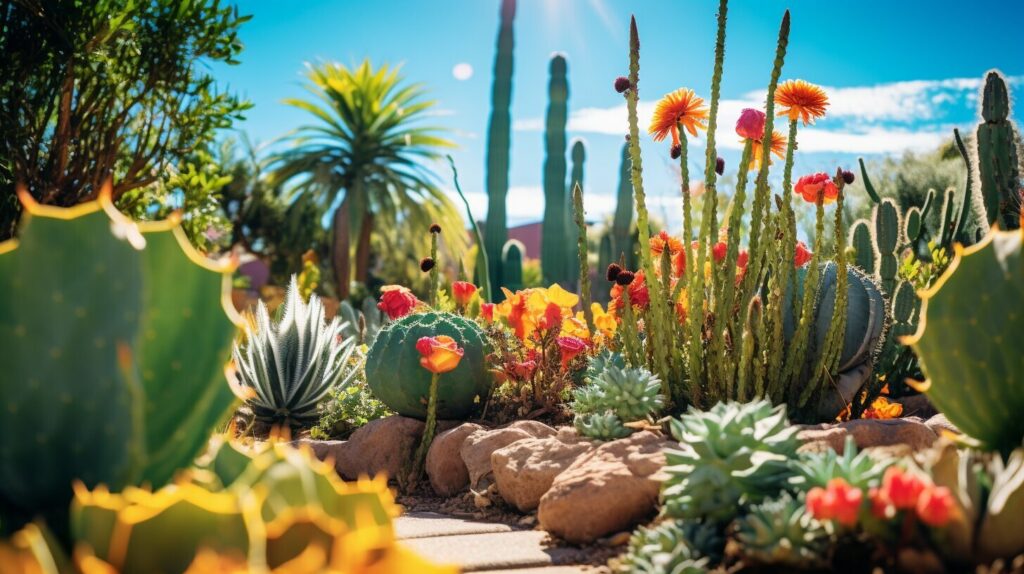
Creating a Sun-Loving Plant Design Plan
Now that you have a good understanding of the different types of sun-loving plants available, it’s time to create a design plan that maximizes their visual impact. Here are some factors to consider:
- Plant height: Varying the heights of your plants adds dimension and depth to your landscape. Make sure to consider the mature height of each plant when planning.
- Texture: Combining plants with different textures creates interest and contrast. For example, pairing a plant with large leaves with one that has small leaves.
- Arrangement: Group plants in odd numbers (3, 5, 7, etc.) for a more natural and cohesive look. Also, make sure to consider how each plant will fill out as it grows.
Remember to take into account the specific features of your landscape, such as walkways, porches, and fences. Consider using plants of different colors and blooming seasons to create a visually striking display throughout the year. Don’t be afraid to experiment and try new combinations!
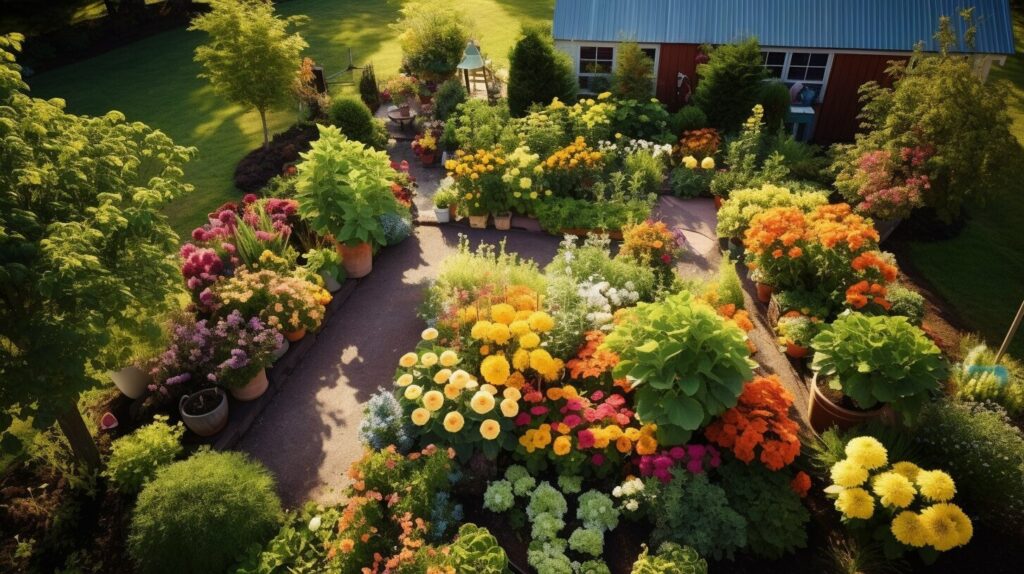
Pro Tip: Create a rough sketch of your design plan before planting to ensure you have a well-thought-out plan that takes into account all the factors we’ve discussed.
Best Sun-Loving Plants for Different Landscape Features
When it comes to curb appeal, different areas of your landscape may have different functions and design needs. Luckily, there are sun-loving plants suitable for any landscape feature. Use this guide to select the ideal plant for each area:
| Landscape Feature | Ideal Sun-Loving Plants |
|---|---|
| Front Yard Beds | Lantana, Zinnia, Coneflower |
| Foundation Plantings | Bluebeard, Butterfly Bush, Daylily |
| Walkways | Creeping Jenny, Sedum, Thyme |
| Porch or Deck | Petunia, Geranium, Impatiens |
| Poolside | Hibiscus, Canna Lily, Japanese Iris |
| Backyard Beds | Blanket Flower, Russian Sage, Black-eyed Susan |
| Privacy Screen | Golden Bamboo, Arborvitae, Red-Twig Dogwood |
Remember that selecting the right sun-loving plant for each landscape feature is crucial to making your curb appeal design pop. Choose plants based on the amount of sunlight they will receive and the design aesthetic you want to achieve. And don’t forget to check our list of shade-loving plants to create a balanced and visually appealing landscape.
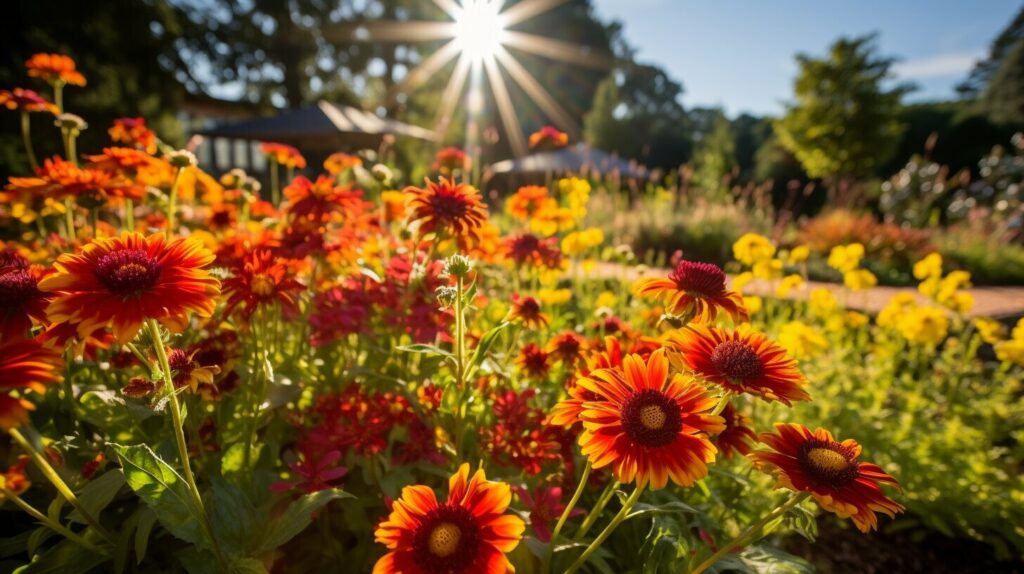
Incorporating Shade Plants for Visual Contrast
To achieve a well-balanced and visually appealing curb appeal, it is important to incorporate shade plants along with sun-loving ones. Shade plants not only provide relief from the scorching sun, but they also add texture and depth to your landscape. It’s crucial to select shade plants that complement your sun-loving plants and enhance the overall aesthetic of your exterior.
Here are some top shade plants to consider:
| Plant Name | Characteristics |
|---|---|
| Hostas | Large, leafy plants that come in a variety of colors and textures. |
| Astilbes | Beautiful, fluffy flowers that thrive in moist soil and provide a pop of color. |
| Ferns | Lush, green plants that come in various heights and require little maintenance. |
| Brunneras | Heart-shaped leaves and delicate blue flowers that bloom in spring. |
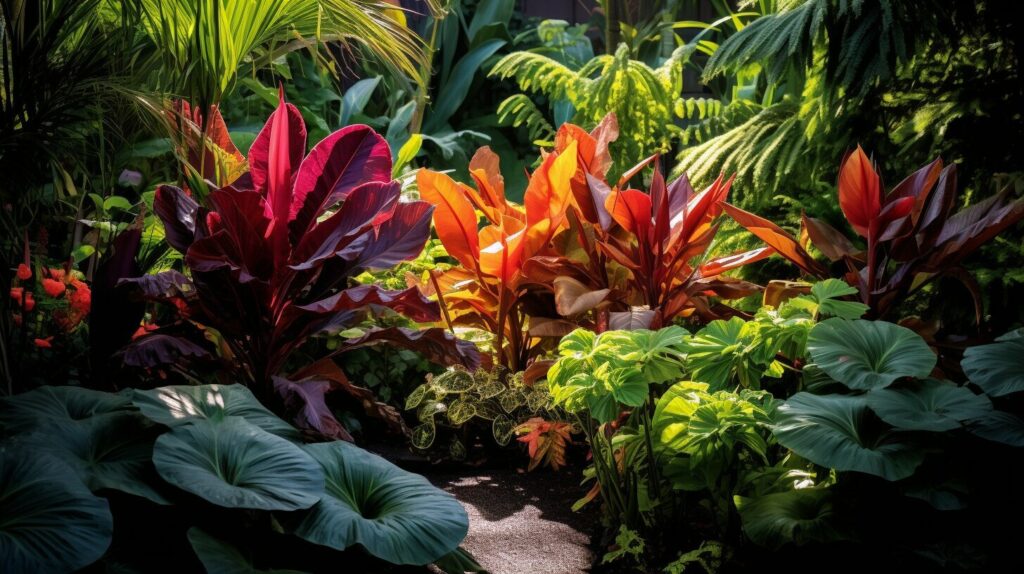
Tip: When selecting shade plants, consider the amount of shade in your yard. Some shade plants require partial shade, while others prefer full shade. Be sure to choose the right plants for the amount of shade in your specific landscape area.
By incorporating shade plants into your curb appeal design, you’ll create a dynamic and visually appealing outdoor space that’s sure to impress. The combination of sun-loving and shade plants will enhance the overall aesthetic of your exterior, providing a welcoming and comforting atmosphere that you’ll love coming home to.
Maintaining and Caring for Shade Plants
Shade plants are an excellent addition to any landscape design. They contribute to the visual contrast and balance between sun-loving plants and create a dynamic, diverse garden. However, like sun-loving plants, caring for shade plants requires attention and specific knowledge.
One important aspect of maintaining shade plants is to ensure they receive the correct amount of water. Unlike sun-loving plants, shade plants thrive in moist soil and will not receive as much direct sunlight to dry out the soil. Overwatering shade plants can lead to root rot, so it is essential to find the right balance. A good rule of thumb is to check the soil moisture level and water only when the soil feels slightly dry to the touch.
Another critical factor in caring for shade plants is fertilization. Shade plants generally need less fertilizer than sun-loving plants because they grow slower in low light conditions. Over-fertilizing can cause rapid growth, weak stems, and susceptiblity to pests and diseases. It is advisable to use organic fertilizers and to follow the instructions on the package for the best results.
Pruning is also an essential aspect of shade plant maintenance. It ensures that the plants stay healthy, encourages new growth, and promotes air circulation. To prune your shade plants, remove any dead or diseased foliage and cut back any overgrown branches. Trim regularly to control the plant’s shape and size.
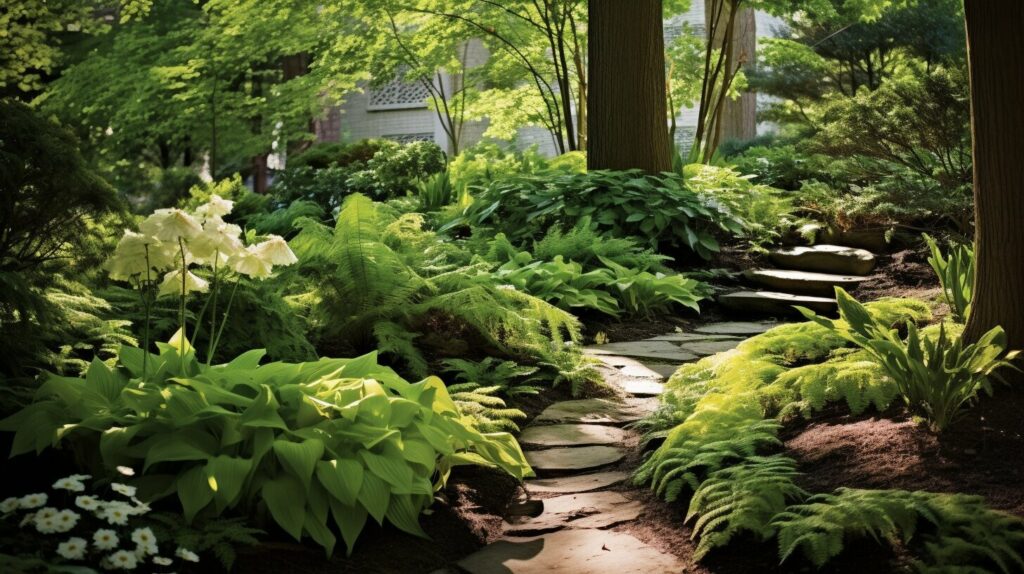
By following these essential care tips, you can ensure that your shade plants thrive and contribute to your overall curb appeal. Remember to pay attention to your plants’ specific needs, provide the correct amount of water and fertilizer, and regularly prune to maintain their health and vitality.
Creating a Cohesive Design with Sun-Loving and Shade Plants
While sun-loving plants can bring vibrant colors and energy to your landscape, it’s important to balance them out with shade plants to create a cohesive and visually appealing design. Incorporating shade-loving plants can provide a tranquil and calming effect, creating a more inviting atmosphere for your home.
When choosing your shade plants, consider their growth habits and colors to complement your sun-loving plants. Hostas, ferns, and hydrangeas are great options for adding texture and contrast to your landscape while thriving in shaded areas.
One effective way to blend sun-loving and shade plants is to choose plants with similar leaf shapes or colors. For instance, you can pair the fine-textured leaves of Japanese Forest Grass with the broad, heart-shaped leaves of Hosta to create a harmonious design.
Another approach is to use shade plants as a backdrop for your sun-loving plants. For example, you can plant a line of ferns or hydrangeas in the background of your sun-loving flowers to create depth and dimension.
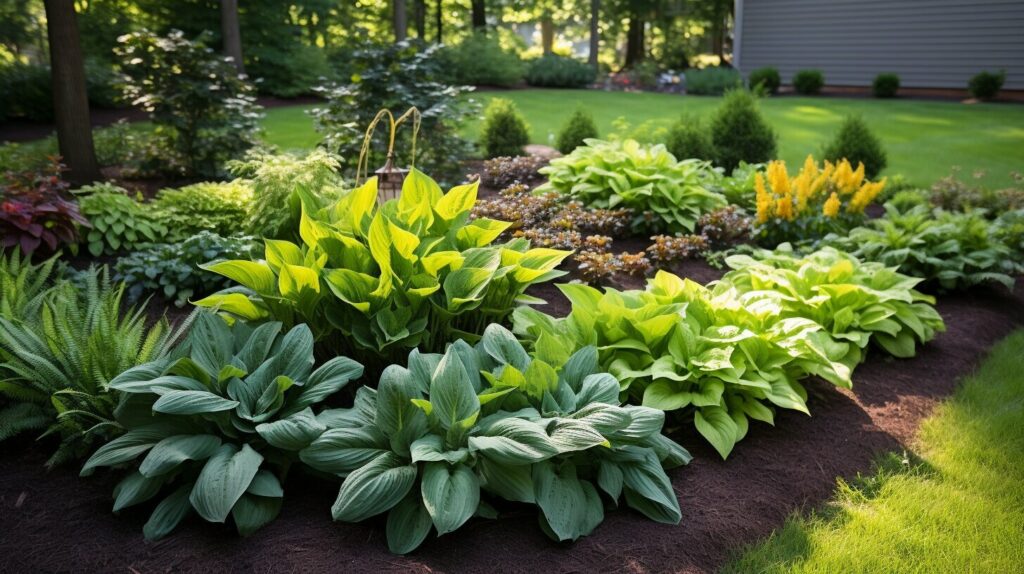
Remember to choose shade plants that are compatible with the same climate and soil conditions as your sun-loving plants, and pay attention to their maintenance needs to ensure they thrive.
By thoughtfully blending sun-loving and shade plants, you can create a unique and inviting landscape design that enhances the overall curb appeal of your home.
Conclusion: Enhance Your Curb Appeal Today!
Curb appeal is essential in creating a welcoming and visually appealing home exterior. Incorporating sun-loving plants into your landscaping can significantly contribute to enhancing your curb appeal. From vibrant colors to attracting pollinators, sun-loving plants offer several benefits that can transform your home exterior.
When selecting sun-loving plants, there are several factors to consider, such as climate compatibility, soil requirements, and maintenance needs. It’s important to choose plants that thrive in your local area and can withstand the sun’s intensity.
Our top five sun-loving plant recommendations include the eye-catching coneflower, the bold and beautiful daylily, and the delicate and fragrant lavender. These plants come in a variety of colors and blooming seasons, allowing you to create a diverse and dynamic landscape design.
Proper care and maintenance are essential to ensure your sun-loving plants thrive. This includes regular watering, fertilization, pruning, and pest control. By taking good care of your plants, you can create a stunning and long-lasting curb appeal.
Incorporating shade plants alongside sun-loving plants can create a balanced and visually appealing landscape. Shade plants offer a contrast in texture and color, adding depth and dimension to your design. Our top shade-loving plant recommendations include the versatile hosta, the colorful and evergreen hellebore, and the classic fern.
When combining sun-loving and shade plants, it’s essential to create a cohesive design that complements each other. By strategically placing these plants, you can create a harmonious and visually stunning landscape design.
In conclusion, enhancing your curb appeal with sun-loving plants is a great way to create a welcoming and visually appealing home exterior. By selecting and caring for your plants, you can create a long-lasting and beautiful landscape design that will impress your neighbors and visitors alike. So start incorporating sun-loving plants into your landscaping today!
FAQ
Q: Can I plant sun-loving plants in shady areas?
A: No, sun-loving plants require direct sunlight for optimal growth. They will not thrive in shady areas.
Q: How often do sun-loving plants need to be watered?
A: Sun-loving plants generally require regular watering, especially during hot summer months. It’s important to check the soil moisture and water when it feels dry to the touch.
Q: What type of soil do sun-loving plants prefer?
A: Most sun-loving plants prefer well-draining soil that is rich in organic matter. Make sure the soil is loose and has good drainage to prevent waterlogging.
Q: Do sun-loving plants attract pollinators?
A: Yes, sun-loving plants with colorful flowers are known to attract bees, butterflies, and other pollinators. These plants can help support local pollinator populations.
Q: How can I protect my sun-loving plants from pests?
A: Regularly inspect your plants for signs of pests and take appropriate measures such as using organic pest control methods or introducing beneficial insects to control pest populations.